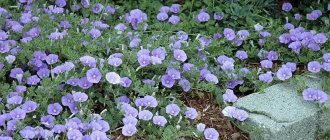13 plants that grow in the wild
Posidonia oceanica
The plant, which is 8 km long, was discovered by oceanologists in Spain in 2006. A total of 9 species are distinguished. Posidonia grows at a depth of 30 - 50 meters, forming green meadows. Development is guaranteed by erect and creeping shoots. Sea grass fills the water with oxygen, and its thickets are home to crustaceans and small fish.
Calamus
The second name “rattan” refers to tropical climbing vines. It is considered the longest plant in the world, stems 7 cm thick reach 200 - 250 m. Rattan palm without branches, leaves grow from buds on the trunk. Calamus spreads to other trees thanks to its thorny leaf veins. If the vine has dropped to the ground, then after a while it will climb to the top again.
Victoria amazonica
The water lily, with a diameter of more than 2 meters, grows in the Amazon and Guyana rivers. The leaves are large, can withstand a weight of 30 kg, and adults walking on them will not get their feet wet. Victoria flowers are placed in the depth of the reservoir, peeking out for 3 days during flowering.
The outer side of the water lily has long spines that drive away fish and animals. Inside the “saucer” there are water outflows to prevent the accumulation of liquid. Local residents not only admire Victoria, but also eat the fruits.
Attempts to cultivate the plant were unsuccessful until 1849.
Amorphophallus titanica
The tallest flower in the world, known as "Voodoo Lily", "Snake Palm", "Titan Arum". Amorphophallus is initially a massive tuber measuring 50 cm and weighing 50 kg. In the spring, a stalk-stem with spots emerges, and the plant gains 7 cm in growth every day.
When blooming, half of the flower cob heats up to 40 degrees. As a result, heat enters the environment. After oh, the leaves grow quickly, reaching 6 meters. Despite the rotten smell of the Snake Palm, the flow of tourists to the places where the plant grows does not dry out.
Carnegie
The only example of the species, it looks like a candelabra. A cactus that grows up to 15 m is the tallest “thorn”. The stamens of the saguaro are so spacious that they can accommodate birds' nests. Leaves are often absent, and seedlings develop thin scales. By remaining open, the flower attracts bats, bees and hummingbirds.
Carnegie is protected by the government. For causing damage to a plant, the offender faces 26 years in prison.
Kirkazon
Another name is Aristolachia, which belongs to the genus of woody vines. There are 480 varieties common in tropical forests. The plant looks like a smoking pipe and stretches up to 33 cm, and reaches 27 cm in diameter. The floral reproductive organs are a “trap”; insects dissolve there.
Decorative varieties of Aristolachia are grown in greenhouses and parks. Consumption of poisonous Kirkazon is dangerous and threatens a person with kidney damage. In a number of countries, drugs containing aristolochic acid are prohibited.
Puya Raimondi
The “queen” of the Andes mountain peak with the most bulky inflorescence – 10 m. At the end of the 19th century, the plant was found and described by an Italian scientist. Puya Raymonda does not bloom immediately, but after 110 - 150 years of growth.
The harsh climate, temperature changes are not dangerous for the flower, Puya contains a substance similar to antifreeze. Peruvians use the plant as fuel and to protect the walls of their homes. Every year the number of these flowers on the planet decreases, the plant risks falling into the group of dying species.
Rafflesia Arnolda
The largest plant on the planet, it is 1 meter wide and weighs 8 kg. The name was given in honor of the British naturalist D. Arnold. The flower does not have its own rhizomes, so its vitality is drawn from the vines. Rafflesia constantly feeds on the juice flowing from the veins of climbing plants.
The blood-red flower ripens slowly, gaining strength for about 9 months. The tiny seeds are not visible to the naked eye. The fleshy petals open rarely, blooming for only 3 to 4 days. Indonesians obtain an extract from Rafflesia buds, but deforestation is leading to the threat of extinction of the flower.
Velvichia is amazing
A relict plant, 8 m long and almost 2 m wide, was discovered by an Austrian botanist. Found in the rocky Namib Desert. Velvichia gets the necessary portion of moisture through the fogs. Dying leaves are split by the wind into narrow strips, remaining durable.
The lifespan of a flower is long and amounts to 2 thousand years. The age of some specimens was determined by radiocarbon dating. Gardeners grow Velvichia in the greenhouse and at home. Amateur collection of seeds without special permission is prohibited.
Cylindropuntia Bigelow
The shrub used to be called "Prickly Pear Bigelow." It was studied by the American researcher D. Engelman. The plant reaches a height of 1.6 - 2.8 m, blooming from February to May. Birds nest on prickly pear, and hamsters settle nearby to escape from enemies. The plant reproduces in an unusual way; rodents carry the seeds across the plain on their fur.
Corypha umbellata
The talipot palm has the largest inflorescences, growing up to 8 m. Individual specimens of the tree reach a height of 25 m, and the width of their trunk is about 1.5 m. Corifa blooms once, between 30 and 80 years. Ripe yellow-green fruits appear in quantities of 1000 pieces. Having completed fruiting, the palm tree dies.
Stapelia gigantea
The largest smelly succulent from South Africa. The impressive “dimensions” influenced the names: “Zulu Giant”, “Toad Flower”. The buds grow up to 35–40 cm in diameter. Petals with hairs look aesthetically pleasing, although they smell terrible.
The only insects that pollinate the plant are flies. The beautiful flower is unpretentious and appeals to inexperienced gardeners. Stapelia is popular and is often grown in the garden for decoration.
African Hydnora
The largest flower of the predatory type, which has chosen the lands of the island of Madagascar and the soils of the Arabian desert. The appearance of the parasite is similar to a snake's head opening its mouth. The specific aroma attracts dung beetles. The surface of a blossoming plant is 10–15 cm high.
Aboriginal people use the roots of Gidnora to treat cardiovascular diseases.











